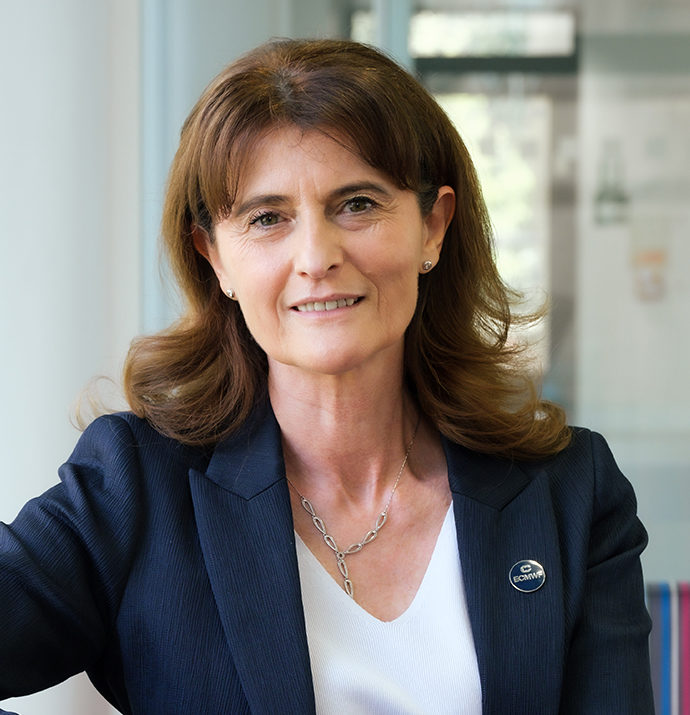 Over the years, ECMWF has vastly increased the resolution of its global forecasts. In our first operational medium-range forecasts in 1979, predictions were made for grid points separated by up to about 200 km. The grid point spacing has since gone down dramatically: it was for example about 60 km in 1991, 25 km/50 km for high-resolution/ensemble forecasts in 2006, and 9 km/18 km for high-resolution/ensemble forecasts in 2022. The main reason for the increases in resolution has been to resolve weather developments that take place on smaller scales. This requires great computing power, and it is one of the reasons why greater resolution has gone hand in hand with new supercomputers. Our new Atos BullSequana XH2000 high-performance computing facility (HPCF) in Bologna is expected to go into operations later this year, and for 2023 another increase in resolution is planned. This will halve the grid spacing of our ensemble forecasts to about 9 km. But we do not intend to stay there.
Over the years, ECMWF has vastly increased the resolution of its global forecasts. In our first operational medium-range forecasts in 1979, predictions were made for grid points separated by up to about 200 km. The grid point spacing has since gone down dramatically: it was for example about 60 km in 1991, 25 km/50 km for high-resolution/ensemble forecasts in 2006, and 9 km/18 km for high-resolution/ensemble forecasts in 2022. The main reason for the increases in resolution has been to resolve weather developments that take place on smaller scales. This requires great computing power, and it is one of the reasons why greater resolution has gone hand in hand with new supercomputers. Our new Atos BullSequana XH2000 high-performance computing facility (HPCF) in Bologna is expected to go into operations later this year, and for 2023 another increase in resolution is planned. This will halve the grid spacing of our ensemble forecasts to about 9 km. But we do not intend to stay there.
For example, as described in this Newsletter, further reducing the grid spacing to 4.5 and 2.8 km markedly improves predictions of tropical cyclone intensity. An ECMWF team tested those resolutions with US Oak Ridge National Laboratory scientists and found better agreement of forecasts with observations. They also established that the benefits can already be achieved at 4.5 km. Another group of scientists found that water and energy are not conserved in current high-resolution forecasts at 9 km, and even less so at 4 km. They developed a solution that reduces the water imbalance to practically zero for both 9 km and 4 km resolutions. This change leads to better precipitation forecasts even at 9 km.
Other news articles describe an internal project focusing on understanding systematic error growth in the Integrated Forecasting System; a review of the application of weak-constraint 4D-Var data assimilation in the stratosphere; and the monitoring of satellite aerosol optical depth products. The feature articles include two external contributions: one sets out how ECMWF ensemble forecasts are used to help plan operational reconnaissance flights for tropical cyclones and atmospheric rivers, and another outlines a mesoscale ensemble prediction system operated on ECMWF’s HPCF by a consortium of countries in Central Europe, including some ECMWF Member States. There is also a description of our new network and security infrastructure created to enable our supercomputing activities to take place in Bologna. A fourth article gives insights into an innovative project developing a new coupled sea-surface temperature analysis, as a step towards our strategic objective of better using observations at the interface between different components of the Earth system. As part of this project, the ocean model trajectory is to be upgraded from 1/4 degree spatial resolution to 1/12 degree resolution, in particular to provide a better representation of the Gulf Stream. This shows that the issue of higher resolution is not just confined to the atmosphere but concerns the ocean, too.
Florence Rabier
Director-General

